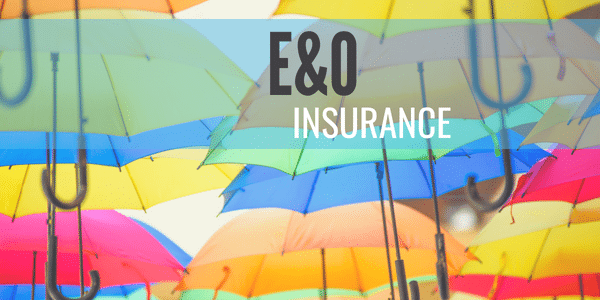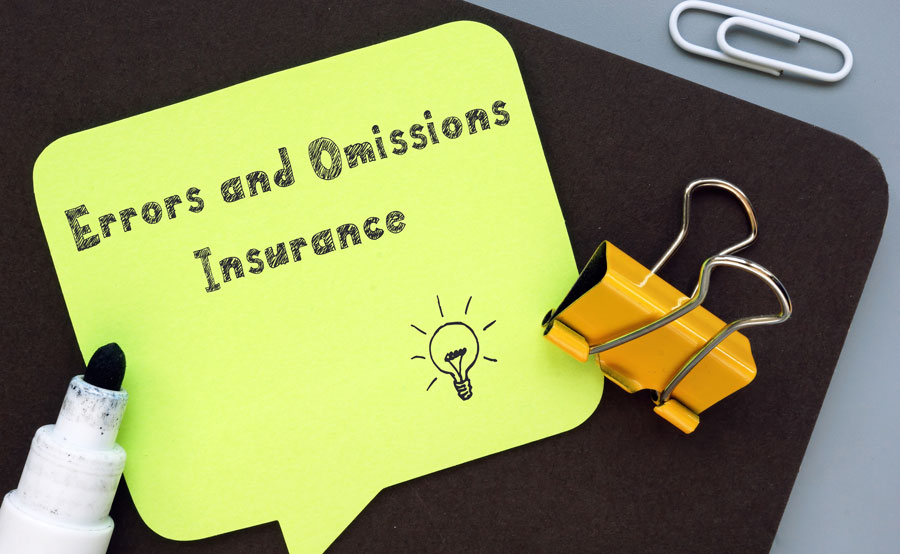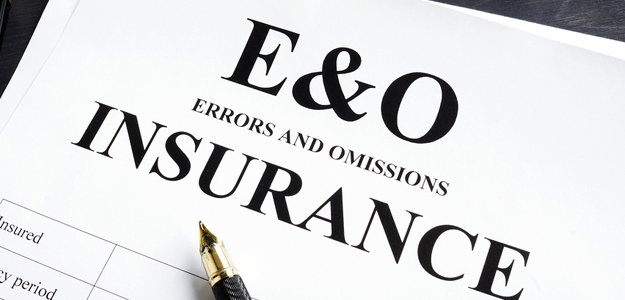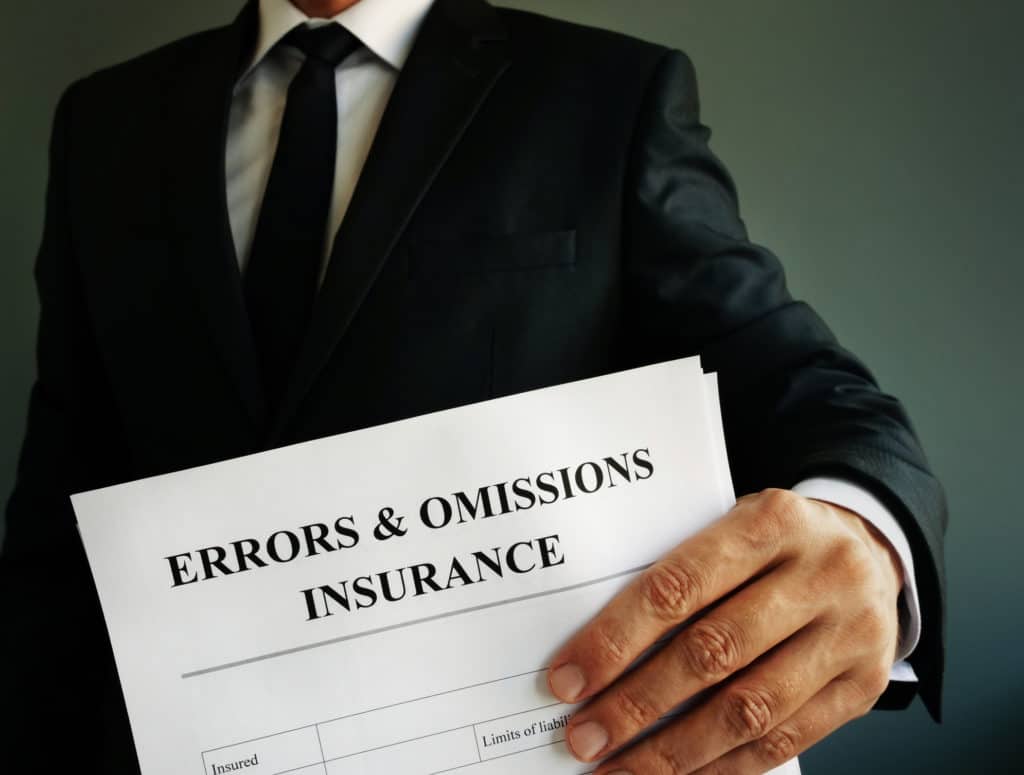Insurance for business liability covers damages resulting from bodily injury, property loss or advertising injury. What happens if a printer fails to notice a typographic mistake on large orders of engraved wedding invites? What happens if a plumber fails to repair a leak and floods an entire office? Errors and omissions insurance is one of those insurance terms that have a more commonly used abbreviation such as “E&O insurance“.
These issues can be solved by purchasing errors and omissions insurance. E&O insurance provides specialized protection against losses that are not covered by traditional insurance. This insurance protects your business and you from lawsuits by clients for negligent acts, errors, or omissions that were committed while running a business that results in financial loss.
What is E&O insurance?
E&O insurance provides specialized protection against losses that are not covered by traditional insurance. This insurance protects your business and you from lawsuits by clients for negligent acts, errors, or omissions that were committed while running a business that results in financial loss.

Who Needs E&O Insurance?
E&O Insurance is used and required by many different vocations. For instance, upon getting your real estate license, you must have current E&O insurance as well as keep up with your continuing education to stay licensed.
In addition to the real estate industry, below are some other business verticals that require errors and omissions insurance
- Consultants.
- Accountants or auditors.
- Architects.
- Engineers.
- Insurance professionals.
What type of E- and O insurance should you buy?
 Insurance policies that cover errors and omissions can vary from one company to the next. They are designed to address common risks and exposures specific to each type of business.
Insurance policies that cover errors and omissions can vary from one company to the next. They are designed to address common risks and exposures specific to each type of business.
Even if claims are not justified, legal fees, and any related expenses, can quickly drain a company’s cash reserves, creating financial hardship. Most errors and omissions policies cover court costs, judgments and settlements up until the policy limits.
Sometimes, events that result in a loss to a client could have happened many years ago. The first sign of a mistake is when a summons from the court arrives in the mail. This is when it’s important to know the policy’s retroactive date. The policy’s retroactive date is the most important. It provides more protection and coverage.
Who has E&O insurance?
If you provide services for a fee, errors and omissions coverage is necessary. E&O insurance is typically provided to printers and building-trades contractors such as plumbers, electricians, HVAC installers, sheet metal workers, and plumbers.
E&O insurance can be tailored to specific industry or business needs. A printer, for example, is more at risk than an electrician. Both require liability insurance but each requires a different type of coverage.E&O insurance policies typically cover:
- You, the owner of the business
- Hourly and salaried employees
- Subcontractors who work for your business
What is E&O insurance?
The following are covered by most errors and omissions policies, subject to certain limits:
Judgments – Covers the decision made by a judge or court, up to the policy limits
 Attorney Fees – This policy covers your attorney fees to defend your business in court up to the limits of your policy.
Attorney Fees – This policy covers your attorney fees to defend your business in court up to the limits of your policy.
 Court Costs – This policy covers your business defense costs up to your policy limits
Court Costs – This policy covers your business defense costs up to your policy limits
 Settlements- This covers the costs of settling a plaintiff’s claims outside of court, up until your policy limits
Settlements- This covers the costs of settling a plaintiff’s claims outside of court, up until your policy limits
How Much Does E&O Insurance Cost?

What is the cost of Errors & Omissions (E&O), insurance?
Below is a list of things that can affect the cost of your E&O insurance:
- Business size because of the number of employees you have, there may be higher risks. Smaller businesses tend to have fewer employees and pay lower rates.
- Revenue,because higher money can mean more lawsuits.
- Industry and what risks you are exposed to. A construction company might have an unusually high rate of errors and omissions because they can cause property damage.
- Training your employees as teaching them how to reduce risk can help lower your insurance rates.
- Contracts because, depending on their content, they can increase or decrease your liability exposure.
- Location,especially in states with more stringent minimum coverage requirements.
- History of claims as you could be charged more for E&O insurance if there are a lot of lawsuits.
- Coverage limits , as policies with higher limits are more expensive than those with lower limits.
A Business Owner’s Policy (BOP) is a great idea for business owners. You can get three important coverages in one policy.
- Insurance for commercial property
- General liability insurance
- Insurance for business income
You can also add additional layers to your BOP to get greater coverage.
- Data breach insurance
- E&O and professional liability insurance
- Workers’ Compensation Insurance
Bundling policies can be more cost-effective than purchasing them individually. You can also customize your BOP according to your business’ needs.
Examples of Insurance Costs for Errors and Omissions
E&O coverage costs typically run between $500 and $1,000 per employee per year. If your company has 50 employees, your annual errors and omissions insurance premium can be estimated to be between $25,000- $50,000. This is a rough estimate. This is only an estimate. Other factors such as location, type and history of claims will affect your actual rate.There are many ways to get a Get a quote Through trusted insurance companies like The Hartford. We are here to answer all your questions and guide you through the details of each type business insurance. We’ll then help you decide exactly what you need, and provide a total cost for your business insurance.

